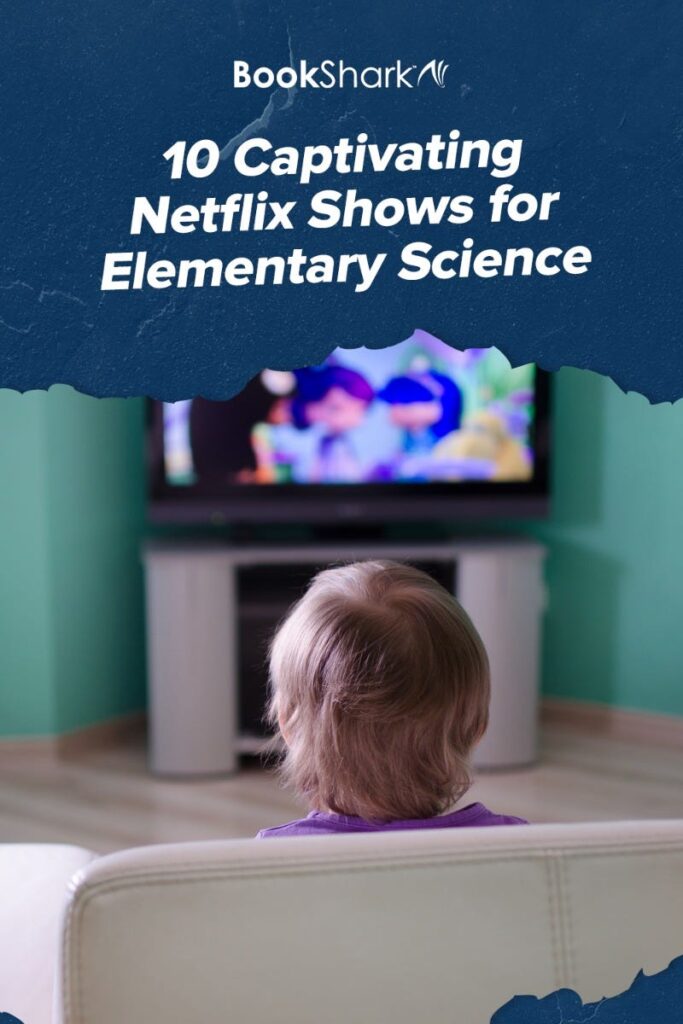We all have days where we need a break or something extra to cope with a bad day. Netflix is the perfect resource for finding those little extras. And since there are so many educational shows on Netflix, you don’t even have to feel guilty about regularly relying on these videos.
My kids thinking watching Netflix is a treat and they hardly even realize they are learning. But they’ve absorbed so much about ecosystems, outer space, and the human body in ways that visually supplement our literature-based curriculum.
The science shows listed below are specifically good for kids in Kindergarten through fifth grade and cover topics especially interesting to them: animals, space, the Earth, the human body, and so much more.
1. Magic School Bus
The Magic School Bus is a classic show that is still relevant today. Ms Frizzle covers topics from geology and dinosaurs to weather and the water cycle. If there is a science topic you want to learn more about, The Magic School Bus probably has an episode for you. Pair the program with a Magic School Bus picture book for extra reinforcement.
2. StoryBots
Have you ever heard the statistic that four year olds ask almost 300 questions a day? Well StoryBots is out to answer those random questions.
- Why is the sky blue?
- Why does it rain?
- How do birds sing?
This show is definitely for the younger kids, but it will still engage older elementary kids who have the same questions, especially if you go a bit deeper beyond the video by doing extra research.
3. Cat in the Hat Knows a Lot About That
If you like the nonfiction Cat in the Hat books, you’ll love the videos that go along with them. They cover many topics but mostly focus on nature. There is a lot of information about different animals and habitats. We’ve enjoyed episodes about deserts, bees, bats, and rainforests, for example.
4. Space Racers
For kids who love space and want to learn more, Space Racers is a good fit. It covers all kinds of space topics like satellites, the moon, and stars. This show is probably better for younger elementary, but it’s a great supplement for your homeschool science curriculum about outer space.
5. Bill Nye the Science Guy
Bill Nye was a staple of my childhood, and I am so excited to be able to share him with my kids. His videos are fast paced and entertaining which is the perfect combination to hold children’s attention. Plus he tends to cover intriguing topics in ways that kids can appreciate: the human body, electricity, and chemical reactions, for example.

6. Quiz Time
This show is for younger kids, probably preK and Kindergarten, but it covers some science concepts as well as observation, logic, and more. It’s in the form of a quiz show as the characters complete tasks and solve problems.
7. Jungle Book Safari
Jungle Book fans, now you can learn all about animals from Mowgli and Baloo! Each episode of Quiz Time features a different animal. The shows are only 10-15 minutes long, so they are a quick way to learn more about animals in short bursts of time.
8. Mighty Machines
Have a truck lover? Mighty Machines will be a lifesaver. From airplanes to trucks, this show covers many different types of machines, showing them up close and personal. Although it’s a bit cheesy with some silly voice-overs, it has real footage of massive tools that kids are fascinated by.
9. Fishtronaut
If animals, animal habitats, and animal behavior are on your list of things to study, Fishtronaut is the right show for you. It’s meant for preschool age and up.
10. Brain Games
This show answers questions you didn’t even know you should ask. Brain Games thoroughly explains each topic using multiple experiments and explanations. This show isn’t necessarily meant for kids, but it definitely keeps their attention.
Besides these ten shows, Netflix has hundreds of documentaries on almost every topic imaginable. Simply search for any subject that arises in your science curriculum or that your kids express interest in. Even adult documentaries can usually work for kids, especially if they have a natural curiosity about the topic. Go load up your queue now so you’ll be ready for the next day when you need a video diversion.











